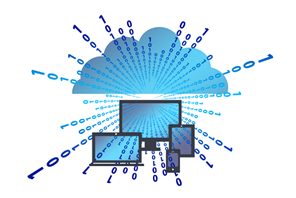 We can all agree that few innovations help a modern lab run more efficiently than a laboratory information management system (LIMS). By integrating digital tools with instrumentation, a LIMS can simplify every key lab activity, including sample management, data storage and analysis, collaboration with colleagues, re-ordering supplies, eliminating paper records, and an ever-growing list of other capabilities. A LIMS also enables many tasks to be automated or streamlined – further increasing your lab’s productivity.
We can all agree that few innovations help a modern lab run more efficiently than a laboratory information management system (LIMS). By integrating digital tools with instrumentation, a LIMS can simplify every key lab activity, including sample management, data storage and analysis, collaboration with colleagues, re-ordering supplies, eliminating paper records, and an ever-growing list of other capabilities. A LIMS also enables many tasks to be automated or streamlined – further increasing your lab’s productivity.
Traditional Barriers to Implementation
While the advantages of LIMS solutions have made them increasingly popular, they’ve traditionally presented some significant barriers to implementation, such as:
- High up-front costs —A big challenge for labs with limited IT budgets. And – hands up – who runs a lab that doesn’t have a limited IT budget?
- Slow deployment time — Back in the day, clunky client-server applications had to be installed on site (on-premises) behind many firewalls. They took ages to implement before they were usable in your laboratory. More modern web-based applications provided more freedom, but still required on-site hardware to be deployed behind firewalls, slowing setup.
- Rapid evolution — New capabilities are constantly being added to LIMS solutions, requiring frequent upgrades and system maintenance – if they can even be done at all due to excessive customization. As a result, it’s not uncommon for many labs to wait a year – or even years – for new features.
- Accessibility —The need to keep data secure along with on-site servers behind firewalls traditionally limited where you could access the system, and on what devices. While this has become less of an issue with the growth of Cloud-enabled systems, some restrictions persist because of the firewall barrier. Accessibility also must be balanced with security concerns.
- Scalability —As your business grows, expanding a conventional LIMS to keep up with new projects and personnel can slow down your progress and profitability. And, as mentioned above, extensive customization of the LIMS can also prohibit scaling.
While any one of these challenges could convince a lab to hold back on taking advantage of the capabilities of a LIMS, they can all be overcome with an innovative new approach.
New On-Demand SaaS Model Makes LIMS More Accessible
Many LIMS solutions already make use of the web to provide access between browsers and on-site application servers. The obvious next step in the evolution of this technology is to go one step further by moving the LIMS itself into the Cloud.
This on-demand software approach, known as Software as a Service (SaaS), offers significant cost, flexibility, and security advantages to labs of any size. In this scenario, your LIMS is licensed on a subscription basis. The system is centrally hosted and maintained in the cloud, where it can be securely accessed via a web browser over an internet connection at any time…and anywhere.
Let’s take a look at how this approach resolves each of the traditional challenges mentioned above.
- SaaS Lowers Your Up-Front and Operating Costs
The SaaS approach eliminates the substantial up-front costs associated with a conventional LIMS, including perpetual licensing, server installations, and additional qualification work. Instead, you get a simple pay-as-you-go subscription that provides everything you need to access and operate the LIMS through your own web browsers.In addition, the system has zero footprint because all the infrastructure needed to run your LIMS is off premises. This translates into significant savings on hardware and software maintenance fees over time, while making valuable space available for other uses. You also get access to single-contact professional support, allowing you to free up internal IT resources.Rapid Deployment Gets You Back to Doing Science
As soon as you sign up for a LIMS via SaaS, the software is already installed and configured for you in the Cloud. There’s no need for the downtime of prolonged software deployment common with traditional systems. You can literally start using your LIMS right away.
- No More Waiting for New Features
Your SaaS provider can make new capabilities and benefits available to you as soon as they are released. Upgrades to the software are deployed centrally to the Cloud, relieving you of the workload, responsibility, and downtime required by a conventional LIMS. There’s no need for you to be concerned about whether your LIMS is up-to-date, because you’ll automatically have the most current version. - Securely Access Your LIMS Anywhere, Any Time
A browser and an internet connection are all you need to access your LIMS on a wide range of devices from any location in the world. Using a Virtual Private Network (VPN) breaks the barrier of your firewall, opening up your LIMS for more science. At the same time, the system ensures all data traffic and servers on your network are secure, while enabling easy access to your instruments, printers, and other external systems. - Scale Your System at Any Pace
On-demand software gives you the flexibility to change subscriptions at any time on an as-needed basis. You pay only for what you need, and only when you need it. As your business grows, you can easily add additional users or modify resources to accommodate change as it happens.

Summing Up the Advantages of SaaS LIMS
The SaaS approach to LIMS delivers significant hardware and manpower savings, simplifies your lab’s budget management, and increases your productivity. In addition to the advantages we’ve covered here, SaaS offers the benefits of seamless integration with other business systems, easy collaboration with colleagues anywhere in the world, stronger data integrity from instrument interfacing, and built-in disaster recovery that ensures your business continuity.
Want to know more about implementing LIMS using the SaaS approach? Contact us today to get the answers and information you need. We’ll be happy to discuss how you can take advantage of this game-changing approach to LIMS, and how the system can be configured for your specific industry or operational approach.

